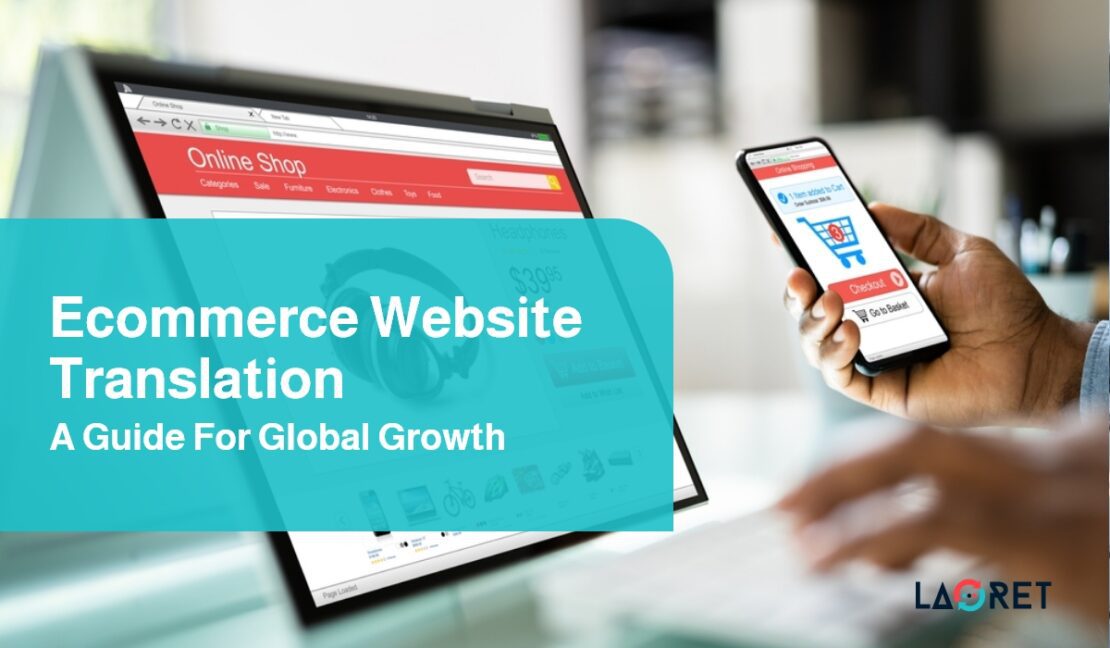eCommerce Website Translation: A Guide for Global Growth
The statistics showing that consumers prefer buying from brands that have content in their native language are old news. In fact, the results of a CSA survey showed that 56.2% of respondents consider the ability to obtain information in their language to be more important than price.
As consumer consciousness grows, eCommerce shops are on the lookout for high-quality eCommerce website translation services. Theyre looking to keep up with the rising demand for multilingual content.
But where to begin?
It’s not as daunting as it may seem. In fact, creating a multilingual website can actually be easier than translating it into just one language.
In this article, we will guide you through the process of eCommerce website translation, its importance for businesses, and the impact it can have on the future of the industry.
The Global Rise of Multilingual eCommerce Websites and the Future of the Industry
With more customers shopping online, it comes as no surprise that 20.8% of retail purchases are expected to take place online in 2023, and the number will jump to 24% in the next three years.
These are the top 10 countries where internet users and online shoppers make at least one weekly purchase:
- Thailand – 66.8%
- South Korea – 65.6%
- Turkey – 64.6%
- Mexico – 64.5%
- Chile – 62.7%
- Indonesia – 62.6%
- India – 62.3%
- UAE – 62.3%
- China – 61.9%
- Malaysia – 61.3%
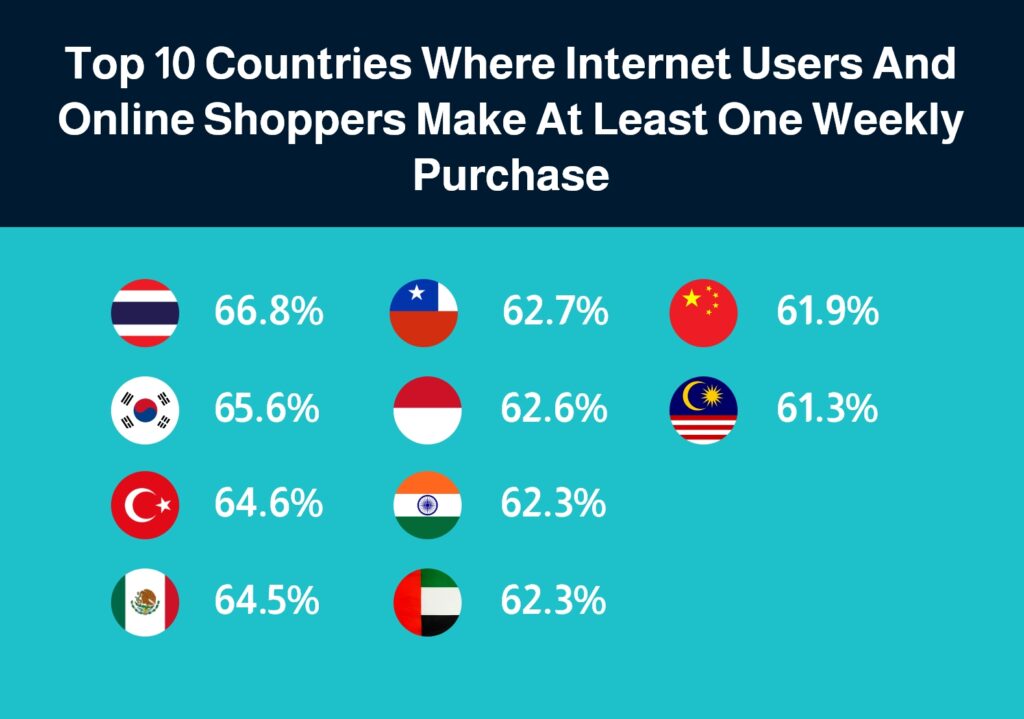
Quick side note, one thing these countries have in common is the fact that are all non-English speaking countries.
According to Statista, after Amazon, which ranks first with over 13% of worldwide visit shares in April 2023, ebay.com follows. While theyre the moguls in the eCommerce industry, data from PipeCandy estimates there are 12 million eCommerce companies globally.
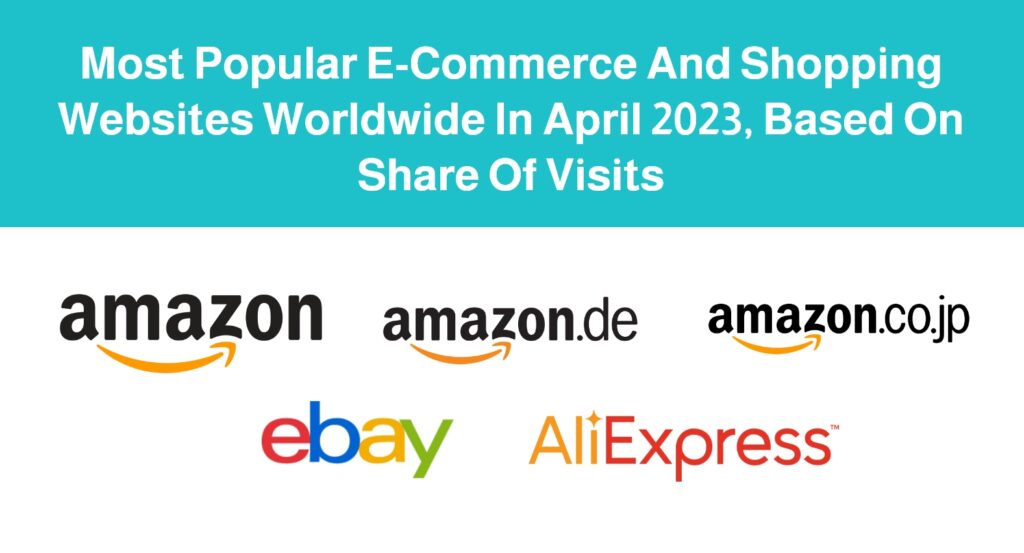
Oberlo estimates show that over half of the top ten eCommerce markets are in Asia. This reflects the region’s significant potential as a marketplace where you can focus your growth efforts.
Three countries to keep top of mind are Singapore, Indonesia, and the Philippines. According to Statista, they are expected to grow by 36%, 34%, and 25%, respectively.
Now, as we know, Asia is one of the most multilingual and diverse regions. It includes hundreds of ethnic groups speaking different languages, such as those in South Asia, Central Asia, the Middle East, the Far East, etc.
And with such diversity, these eCommerce businesses cant afford to limit their digital presence and accessibility to these regions and a wide range of users. Hence, eCommerce website translation.
A great example of a multilingual eCommerce website is Alibaba. It’s localized to +15 languages, including Asian languages like Chinese, Indian, and Indonesian, as well as Arabic, Turkish, and some European languages. This has helped expand their exposure and reach in the region, making Alibaba the largest eCommerce marketplace in Asia.

Even though some might think eCommerce is an oversaturated market, it will continue to grow by 10% in 2023. Then, the question arises: what drives success, and how can eCommerce shops take their place in the market and establish themselves?
eCommerce Industry Statistics Highlights for 2023
- The global eCommerce market is estimated to reach a total of $6.3 trillion in 2023 and over 8.1 trillion in 2026. (Forbes Advisor)
- 57% of online shoppers report shopping internationally. (Paypal)
- 79% of shoppers shop online at least once a month. (Forbes Advisor)

10 Biggest eCommerce Markets:
- China – $3,023Bn
- United States – $1,163Bn
- UK – $195,97Bn
- Japan – $193,42Bn
- South Korea – $147,43Bn
- India – $118,9Bn
- Germany – $97,32Bn
- Indonesia – $97,14Bn
- Canada – $82,81Bn
- France – $79,36Bn (Oberlo)
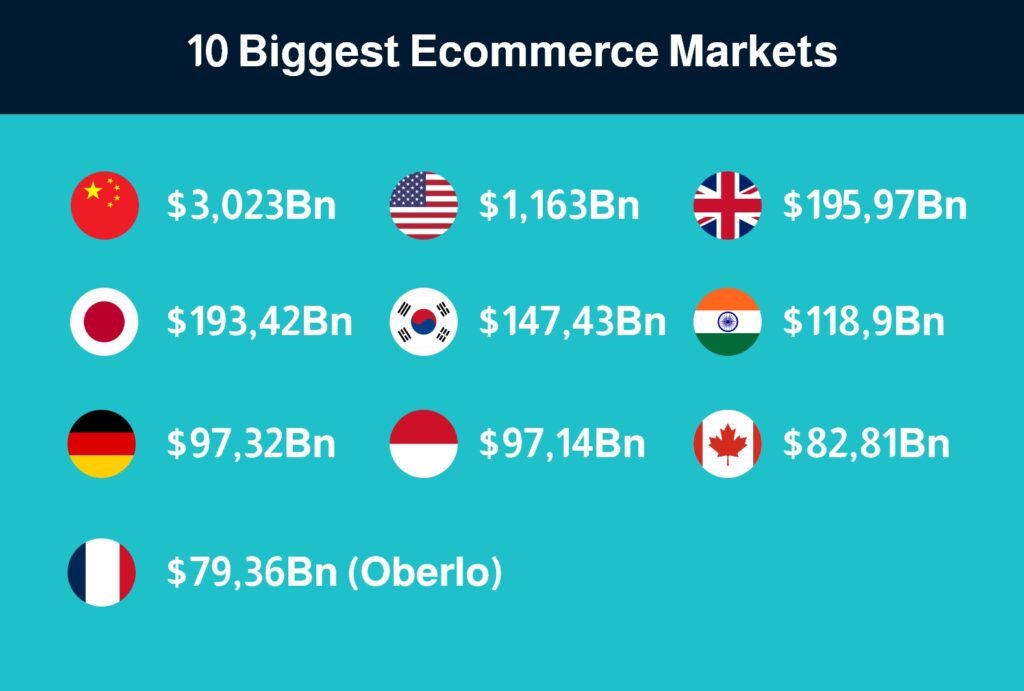
Top eCommerce Sectors by Their Estimated Revenue in 2022
- Fashion – $871.2Bn
- Consumer Electronics – $765.7Bn
- Toys, Hobby & DIY – $601.7Bn
- Furniture – $387.7Bn
- Personal & Household Care – $368.2Bn
- Food – $244Bn
- Beverages – $207.9Bn
- Physical Media (books, CDs, video games, etc.) – $143.8Bn (Dash)
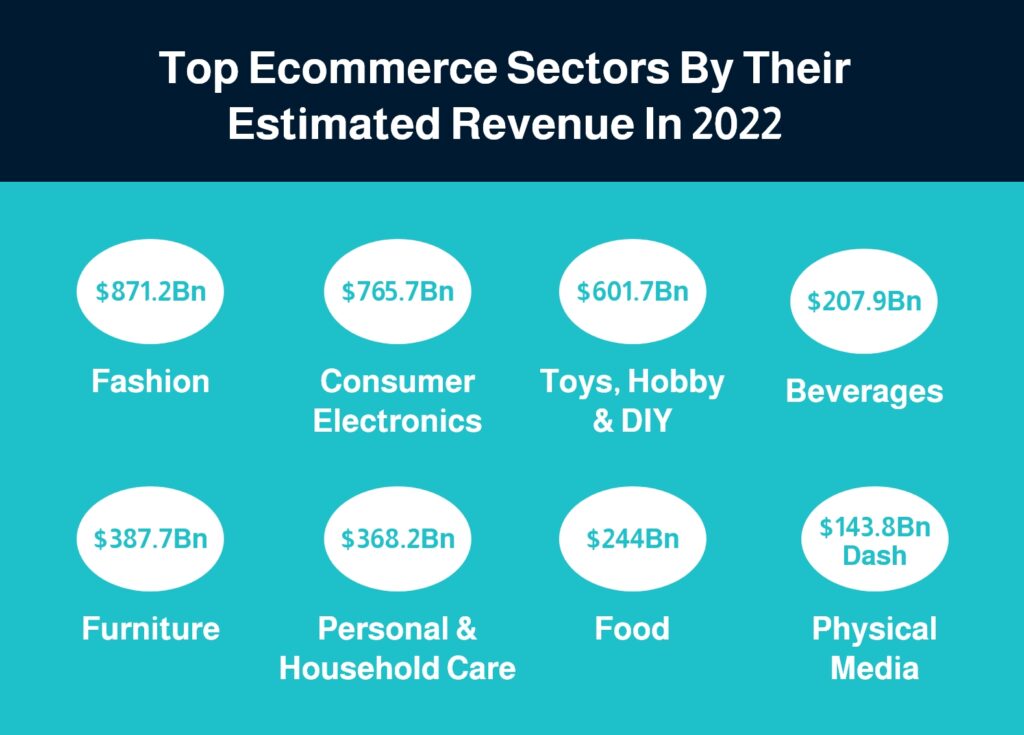
A Step-by-Step Guide to eCommerce Website Translation Process
An Upside report found that post-pandemic retail customers are now less loyal. Online shopping has, of course, contributed to that. While not all Walmart staff can assist Spanish-speaking customers, online Hispanics can now search for pan instead of bread, and they can instantly add it to their carts.
This language barrier might seem like a minor inconvenience, when in fact it can really cause user frustration and affect their entire user experience.
No business could afford this. But the answer is in 3 keywords:
- Personalization
- User Experience
- Customer Satisfaction
And one thing that brings them all together is: Localization

80% of customers are more likely to purchase from a company that offers personalized experiences, according to an Epsilon survey. Localization is an extension of personalization, and with that, your multilingual websites can maximize user experience and achieve customer satisfaction.
How do you reach that?
One of the ways is by introducing your content and products in local target languages and adding cultural context to make your brand top of mind for local audiences.
But what does it take to translate your website?
As you may have guessed, eCommerce localization requires more than just extracting text and translating a Word document. We mentioned briefly that if your vision is big and you really want to exponentially grow your profit, the best choice is to go for eCommerce website translation in multiple languages. Youll be able to curb the cost of translation services over the long term and make your website adaptable to various markets.Below, well go into detail on what an eCommerce website translation process looks like for your online store.
1. Understanding the Scope of the eCommerce Website Translation Project
The number one task in an eCommerce website translation project is to define the scope and requirements of the project.
During this stage, the project manager will work with you to identify the target languages, the content that needs to be translated, and the technical and engineering support necessary. Not to mention the file formats or even policies and legal requirements based on the products youre selling.
Every project has its own intricacies, but it’s good to settle all the expectations as well as any potential eCommerce localization challenges and risks to plan accordingly.
This way, the project management team will get familiar with your business and drive, as well as align their working process with your objectives.
2. Content Extraction and Analysis
Second, all of the website content should be extracted, including text content, product images, videos, and other graphics or multimedia elements.
Following extraction, the team thoroughly analyzes the text to determine what can be translated and what must be transcreated.
Organizing the content files also helps in the selection of the right translation team, which includes experts with the necessary experience and skills to accurately translate eCommerce content.
This step is critical for the overall success of the eCommerce website translation project, as it identifies all potential risks and challenges and plans a strategy to overcome them.
3. Translation, Editing, and Proofreading of the eCommerce Website Content
Now that the team has been selected and tasks have been delegated, native translators can begin translating the content based on the objectives already set.
If the project has a high volume, you might be tempted to use machine translation, but then youll need to implement Machine Translation Post-Editing (MTPE) and add human translation to finetune the content and add local cultural elements.
Here’s a graph showing what sort of content can be run by machine translation before having professional translators work on it:

In addition, eCommerce website translation will necessitate transcreation for marketing materials such as:
- Slogans
- Taglines
- Advertising Copies
- Product Descriptions
Transcreation means adapting the original message to the target audience‘s cultural and linguistic context by reworking the content almost from scratch. The goal is to maintain the overall brand voice and identity while making the content resonate with target audiences.After translating all the content, it still needs revision from a second and third team of linguists to ensure that it is consistent, accurate, and error-free.
4. Localizing Images, Colors, and Symbols for the New Target Market
Each society has its own way of communicating and sending messages non-verbally. Everywhere there are symbols, hand gestures, and different color psychology. Acknowledging these differences and adapting your eCommerce website properly will ensure that the local audience will be more receptive to your brand.
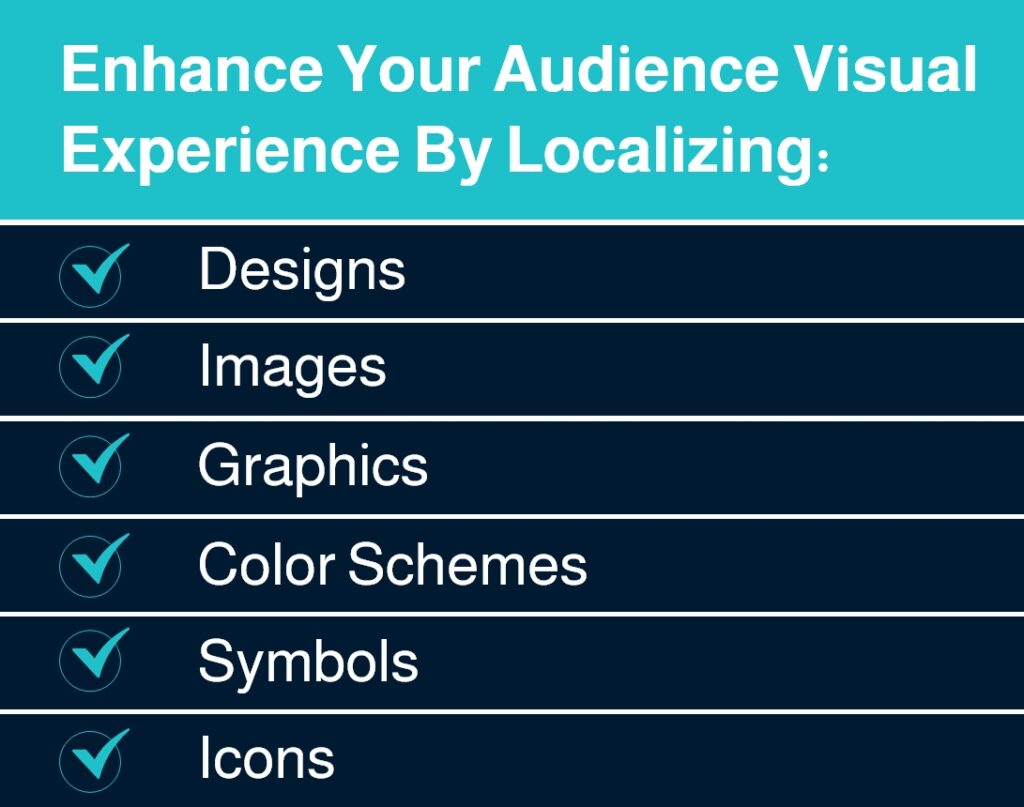
By taking the time to localize images and symbols, you can avoid misunderstandings and create a visual experience that aligns with the values and expectations of your target market.
This does require the help of localization experts who are local and native to your target market.
5. Localizing User Interface: Layout and Navigation Menus
Translation alone is not sufficient; the overall design and structure must be tailored to accommodate the target country’s language and cultural preferences.
The layout of a website may need to be modified to accommodate languages with different writing systems, such as those read from right to left.
Here, localization experts adapt the UI, repositioning elements such as menus, buttons, and navigation bars to ensure intuitive user experiences.
Additionally, the translation process may result in text expansion or contraction, which impacts the layout space and requires adjustments.
6. Quality Assurance
The effectiveness of the Translation Management System (TMS) and quality assurance are two organizational elements that keep any eCommerce website translation project together and showcase the quality of the language services provider LSP.
We like to think of the Quality Assurance process as the final coat of polish on a newly built house.
While QA is an integrated part of the project throughout its lifecycle, it’s also one of the last steps that go through quality control one more time to ensure the localized website and its translated content is error-free and meets your requirements.
Quality Assurance is the encapsulation of expert human and automated efforts, with the help of advanced translating tools, to ensure high-quality multilingual websites.
The finishing touches include a final review run by the project management team before delivering the project back to you for feedback.
All of these steps are synchronized in the TMS, a centralized platform that keeps the entire project on track. It includes communication channels, task assignments, and progress tracking, making it an essential tool for streamlining the quality assurance process.
Lasting and complementary to the quality assurance process is what we call localization testing.
Any website, especially an eCommerce one where many products are displayed, requires a trifold testing process to ensure that there are no linguistic, technical, or cosmetic mistakes.
- Linguistic testing thoroughly checks all translated content and ensures that it is accurate, culturally appropriate, and free of errors.
- Technical testing handles the functionality of the website and includes testing features such as payment gateways and shipping options for different locales, which are crucial to an eCommerce website.
Cosmetic testing ensures that the website’s visual elements, such as fonts, colors, and images, are correctly displayed and aligned after the translation and localization process.
7. Integration and Maintenance
Now that the team has ensured that the content has been meticulously translated and adapted, it is time to integrate and launch the website.
Following the integration of the content into the new multilingual website, technical support also has to run some functionality, design, and user experience testing across multiple devices.
Depending on the project scope, eCommerce website translation would also include ongoing maintenance and support.
A website needs constant work, and that is true in the case of eCommerce websites that have integrated so many elements such as payment processing, customer support, etc. If there are new marketing campaigns or new products that need to be added for a specific location, you will still require the same eCommerce website translation services.
eCommerce Website Translation Process
- Project Scope
- Discuss and agree:
- Target languages
- File formats
- Technical support
- Legal Requirements
- Goals and Objectives
- Deadlines
- KPIs
- Potential challenges and risks
- Discuss and agree:
- Content Extraction and Analysis
- Create all the file formats that need to be translated
- Picking the best team of translators for the project
- Translation, Transcreation, and Localization
- Translation of all content
- Transcreation of marketing content
- Localization of multimedia elements
- Editing and Proofreading
- Quality Assurance
- QA Process
- Translation Technology
- Localization QA and Testing
- Integration and Maintenance
- Integrating all the content
- Performing testing
- Update technical issues and other elements
Download our guide to explore 4 main
tools to increase efficiency and accuracy.
Automation has the power to transform your pharmaceutical translation workflow!
Translating eCommerce Website Content Means Localizing It!
Choosing the right technology and experts is crucial to ensuring the entire eCommerce website translation project and your vision is adapted to the new markets. This is what we call website localization services, and it provides a great return on investment.
If you really want to succeed, youll need to leverage native experts to help you with SEO optimization. So theyll not only translate your product descriptions, but they’ll also use the right phrases that local users search for.
Another example could be taking advantage of local sales days to step up your game.
Here’s why?
According to Adobe Analytics, $9.12 billion was spent on Black Friday in 2022—more than the $5.29 billion that customers spent on Thanksgiving that same year.

Every target audience has their marked days when they spend more, and youll only need local guidance to help you with that.
When we talk about eCommerce website translation in this article, we are referring to a comprehensive translation project that addresses all elements of your website.
Only a specialized LSP with native translators and project managers can provide this type of service. Without such a team, you won’t know which parts of your website require word-for-word translation and which require transcreation. Or what refund and return policies each market has.
Remember that in any market, you will be competing with local online stores, and you will not have insights into the local culture from the comfort of your global office.
By following website translation best practices, the translating team ensures that your multilingual website accurately conveys your brand’s message. This will not only reduce costs but also help with consistency and avoid mistakes or disruptions when working in multiple countries.
Laoret eCommerce Translation Services: New Heights of eCommerce Success
eCommerce or online shopping, is the future. Investing in high-quality eCommerce translation services is not only a smart business move but also a powerful way to show your customers that you value their culture and native language.
Laoret provides end-to-end eCommerce website translation and localization services. We take a strategic approach that involves scoping, content analysis, professional translation and localization, rigorous quality assurance, and ongoing maintenance and support. Request a quote now and stop postponing your global reach.
Conclusion
The significance of professional pharmaceutical translation services cannot be overstated. Accuracy and effectiveness are critical for pharmaceutical product development, marketing, and regulation, and Laoret understands this better than anyone.With our extensive experience in the pharmaceutical industry, we provide a variety of services tailored to your specific requirements, such as life science, regulatory, and marketing translation. At Laoret, we value precision and adherence to industry standards, and we are committed to providing our clients with exceptional service. As an ISO-certified translation company, Laoret guarantees the highest quality translations that meet global standards. In addition, our team employs translation management software to optimize the translation process, resulting in improved cost and time efficiency. Request a quote to learn more.
References
- Statista: The world’s most spoken languages
- World Data: The world’s largest economies
- Internet world users by language
- The 10 Largest E-Commerce Markets in the World by Country
- English levels in China
- The most used languages on the internet
- China: Language simplification to increase literacy?
- The main differences between Mandarin and Cantonese
- The Spanish language in the world
- Internet world users by language
- The U.S. Has the Second-Largest Population of Spanish Speakers—How To Equip Your Brand To Serve Them
- Parker pens make you pregnant, and other due diligence fails!
- Arabic Speaking Countries
- Arab economies to post 5.4 percent growth rate this year on higher oil prices
- More Arab countries are seeking to orient their economies towards knowledge
- Individuals using the Internet (% of population) – Arab World
- French speaking countries
- English Loses Currency as Europe’s Lingua Franca After Brexit Vote
- The rise of Africa’s digital economy
- Mechanical Engineering Industry in Germany: Our Industry Report
- Internet user penetration in Germany from 2018 to 2027

